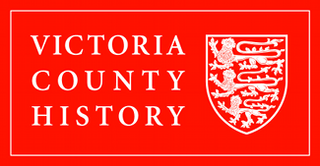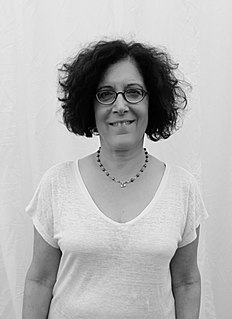Related Research Articles
Year 1235 (MCCXXXV) was a common year starting on Monday of the Julian calendar.
Lyfing of Winchester was an Anglo-Saxon prelate who served as Bishop of Worcester, Bishop of Crediton and Bishop of Cornwall.
Robert Burnell was an English bishop who served as Lord Chancellor of England from 1274 to 1292. A native of Shropshire, he served as a minor royal official before entering into the service of Prince Edward, the future King Edward I of England. When Edward went on the Eighth Crusade in 1270, Burnell stayed in England to secure the prince's interests. He served as regent after the death of King Henry III of England while Edward was still on crusade. He was twice elected Archbishop of Canterbury, but his personal life—which included a long-term mistress who was rumoured to have borne him four sons—prevented his confirmation by the papacy. In 1275 Burnell was elected Bishop of Bath and Wells, after Edward had appointed him Lord Chancellor in 1274.

The Victoria History of the Counties of England, commonly known as the Victoria County History or the VCH, is an English history project which began in 1899 with the aim of creating an encyclopaedic history of each of the historic counties of England, and was dedicated to Queen Victoria. In 2012 the project was rededicated to Queen Elizabeth II in celebration of her Diamond Jubilee year. Since 1933 the project has been coordinated by the Institute of Historical Research in the University of London.

Miri Rubin is a historian and Professor of Medieval and Early Modern History at Queen Mary University of London. She was educated at the Hebrew University of Jerusalem and the University of Cambridge, where she gained her doctorate and was later awarded a research fellowship and a post-doctoral research fellowship at Girton College. Rubin studies the social and religious history of Europe between 1100 and 1500, concentrating on the interactions between public rituals, power, and community life.
David Bates is a historian of Britain and France during the period from the tenth to the thirteenth centuries. He has written many books and articles during his career, including Normandy before 1066 (1982), Regesta Regum Anglo-Normannorum: The Acta of William I, 1066–1087 (1998), The Normans and Empire (2013), William the Conqueror (2016) in the Yale English Monarchs series and La Tapisserie de Bayeux (2019).

England in the Middle Ages concerns the history of England during the medieval period, from the end of the 5th century through to the start of the Early Modern period in 1485. When England emerged from the collapse of the Roman Empire, the economy was in tatters and many of the towns abandoned. After several centuries of Germanic immigration, new identities and cultures began to emerge, developing into kingdoms that competed for power. A rich artistic culture flourished under the Anglo-Saxons, producing epic poems such as Beowulf and sophisticated metalwork. The Anglo-Saxons converted to Christianity in the 7th century and a network of monasteries and convents were built across England. In the 8th and 9th centuries England faced fierce Viking attacks, and the fighting lasted for many decades, eventually establishing Wessex as the most powerful kingdom and promoting the growth of an English identity. Despite repeated crises of succession and a Danish seizure of power at the start of the 11th century, it can also be argued that by the 1060s England was a powerful, centralised state with a strong military and successful economy.
Boydell & Brewer is an academic press based in Woodbridge, Suffolk, England, that specializes in publishing historical and critical works. In addition to British and general history, the company publishes three series devoted to studies, editions, and translations of material related to the Arthurian legend. There are also series that publish studies in medieval German and French literature, Spanish theatre, early English texts, in other subjects. Depending on the subject, its books are assigned to one of several imprints in Woodbridge, Cambridge (UK), or Rochester, New York, location of its principal North American office. Imprints include Boydell & Brewer, D.S. Brewer, Camden House, the Hispanic series Tamesis Books, the University of Rochester Press, James Currey, and York Medieval Press.
Lawrence Stone was an English historian of early modern Britain, after a start to his career as an art historian of English medieval art. He is noted for his work on the English Civil War and the history of marriage, families and the aristocracy.
Sarah Rosamund Irvine Foot, is an English Anglican priest and early medieval historian, currently serving as Regius Professor of Ecclesiastical History at the University of Oxford.
Henry Royston Loyn, FBA, was a British historian specialising in the history of Anglo-Saxon England. His eminence in his field made him a natural candidate to run the Sylloge of the Coins of the British Isles, which he chaired from 1979 to 1993. He was Professor of Medieval History in the University College of South Wales and Monmouthshire and afterwards Professor of Medieval History at Westfield College in the University of London.

The medieval English saw their economy as comprising three groups – the clergy, who prayed; the knights, who fought; and the peasants, who worked the landtowns involved in international trade. Over the five centuries of the Middle Ages, the English economy would at first grow and then suffer an acute crisis, resulting in significant political and economic change. Despite economic dislocation in urban and extraction economies, including shifts in the holders of wealth and the location of these economies, the economic output of towns and mines developed and intensified over the period. By the end of the period, England had a weak government, by later standards, overseeing an economy dominated by rented farms controlled by gentry, and a thriving community of indigenous English merchants and corporations.
Michael Lapidge, FBA is a scholar in the field of Medieval Latin literature, particularly that composed in Anglo-Saxon England during the period 600–1100 AD; he is an emeritus Fellow of Clare College, Cambridge and Fellow of the British Academy, and winner of the 2009 Sir Israel Gollancz Prize.
David Bruce Crouch, is a Welsh historian and academic. From 2000 until his retirement in 2018 he was Professor of Medieval History at the University of Hull.

Warfare in Medieval Scotland includes all military activity in the modern borders of Scotland, or by forces originating in the region, between the departure of the Romans in the fifth century and the adoption of the innovations of the Renaissance in the early sixteenth century. In this period conflict developed from minor raids to major conflicts, incorporating many of the innovations of continental warfare.
Alexandra Marie Walsham is an English-Australian academic historian. She specialises in early modern Britain and in the impact of the Protestant and Catholic reformations. Since 2010, she has been Professor of Modern History at the University of Cambridge and a Fellow of Trinity College, Cambridge. She is co-editor of Past & Present and Vice-President of the Royal Historical Society.
Christopher Tyerman is an academic historian focusing on the Crusades. In 2015, he was appointed Professor of History of the Crusades at the University of Oxford.

In post-classical history, an affinity was a collective name for the group (retinue) of (usually) men whom a lord gathered around himself in his service; it has been described by one modern historian as "the servants, retainers, and other followers of a lord", and as "part of the normal fabric of society". It is considered a fundamental aspect of bastard feudalism, and acted as a means of tying magnates to the lower nobility, just as feudalism had done in a different way.
Walter of Hereford was a twelfth- and thirteenth-century Abbot of Vale Royal Abbey in Cheshire. He was Abbot from around 1294 to approximately 1307. His abbacy occurred at a time of tribulation for the abbey, mostly due to poor relations with the local populace. Walter is in portrayed in his Abbey's later chronicler in superlatives. He is described as "greatly venerable in life and always and everywhere devoted to God and the Blessed Virgin Mary" and as
A man of most beautiful appearance, as regards externals...and in good works also he fought a good fight for Christ, for he used a hair shirt to conquer the flesh, and by this discipline subdued it to the spirit. He rarely or never ate meat.
Peter Marshall is a Scottish historian and academic, known for his work on the Reformation and its impact on the British Isles and Europe. He is Professor of History at the University of Warwick.
References
- 1 2 "Prof Peter Coss". Cardiff University . Retrieved 2020-09-18.
- ↑ "Research". Cardiff University . Retrieved 2008-06-19.
- ↑ Coss, Peter. "Professor Peter Coss". Archived from the original on July 4, 2007. Retrieved 2008-06-19.